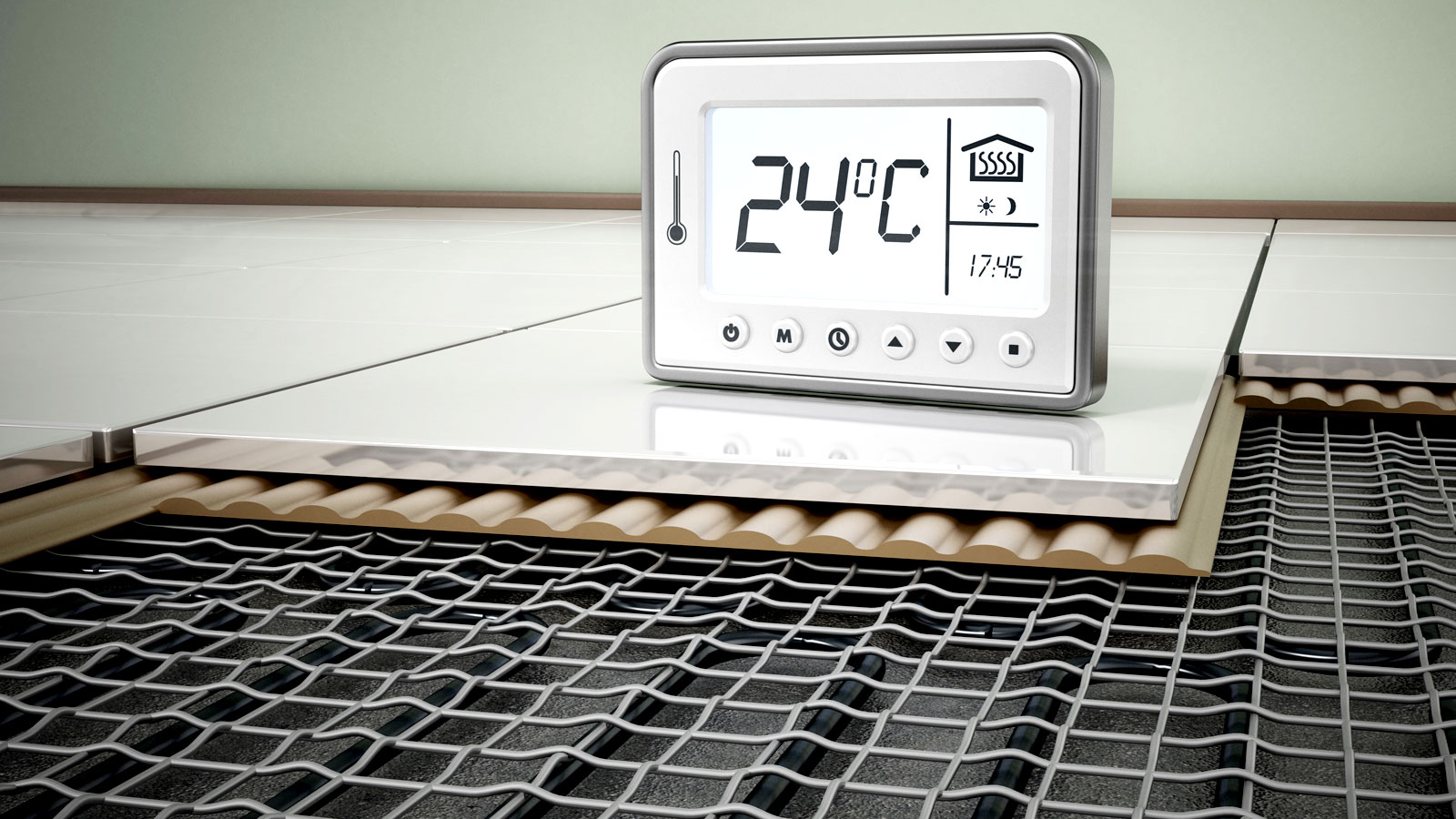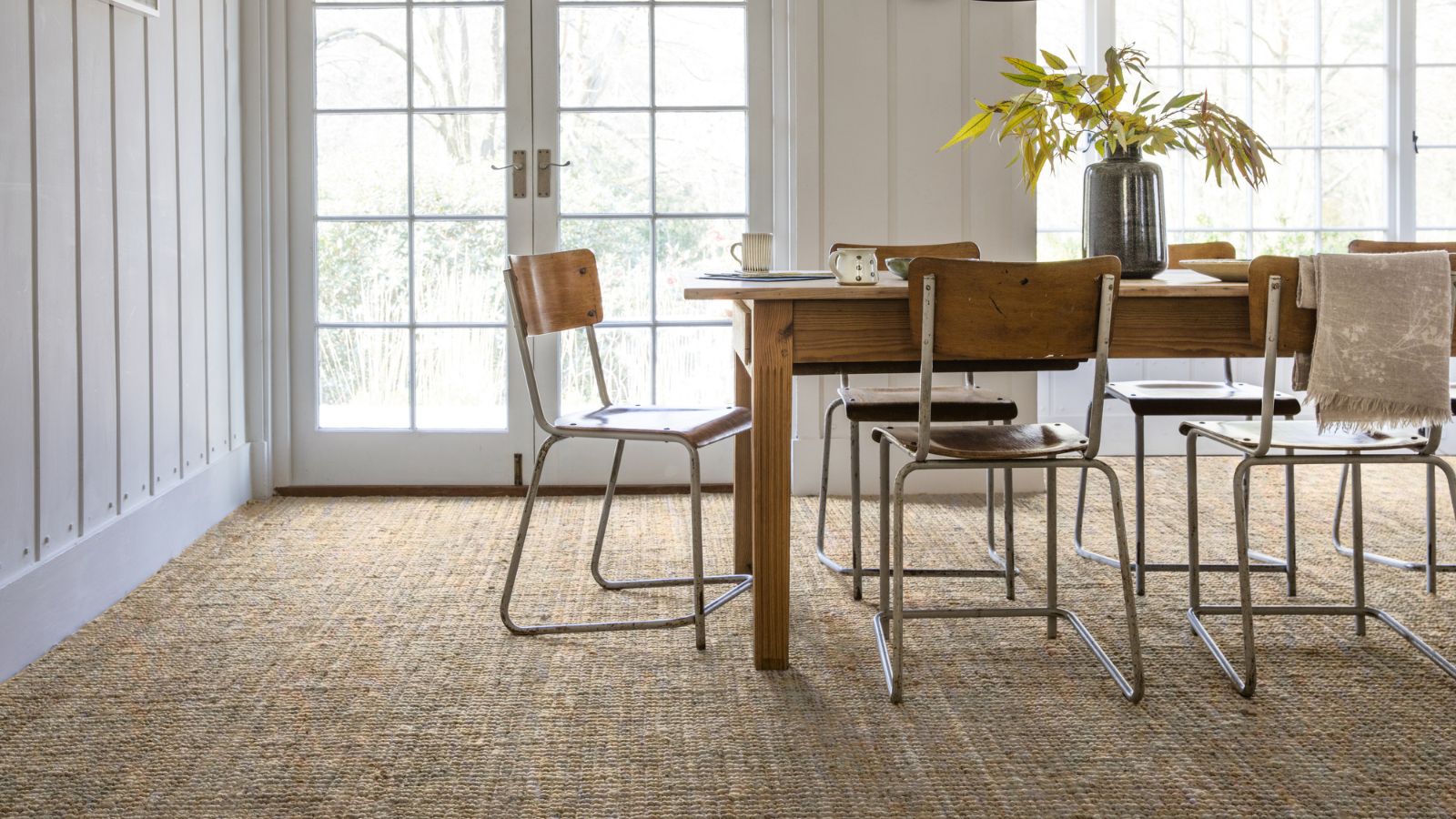What temperature should underfloor heating be set at? An expert view
What temperature should underfloor heating be set at? The pros answer the questions you ask

What temperature should underfloor heating be set at? You might think there is a simple answer, but it's not as straightforward as you think. You can adopt a generic overall temperature, but you soon find that it simply won’t work for every scenario, and could have an adverse effect on your heating bills.
For example, different flooring can have an effect on output so you need to choose the best flooring for underfloor heating. You can use most flooring options, but some work better with wet systems while others work better with electric underfloor heating.
Here the pros provide the answers to help make sure that you get the best out of your underfloor heating when you need it.

Working in the industry for over 15 years Gordon and Alan's mission is to help property owners get warmer and more comfortable with underfloor heating and proper floor screed.
Temperature options for UFH
As we have already mentioned there is no one single temperature setting that works best for underfloor heating. A range of temperatures is prime option for underfloor heating as Gordon Chalk and Alan Houghton, MDs at Next Level Underfloor Heating and Screed Solutions explain here, “The best temperature for underfloor heating is between 18°C to 29°C (64°F to 84°F).“ But they continue, “This will depend on the room and flooring.”
But this is a general temperature range that covers a host of different scenarios. Chalk and Houghton add, “For living areas 21°C to 24°C (70°F to 75°F) is comfortable, bedrooms slightly lower and bathrooms higher if you have tile or stone flooring which feels colder underfoot.” If you want to add tile to your UFH check out our how to tile a bathroom floor guide.
But, why these temperatures? “Underfloor heating provides radiant heat which heats objects and people in the room, not the air. This gives you a consistent warmth across the whole room without the drafts that come from radiators. You can also set the thermostat lower than conventional systems as the heat feels more even and comfortable.”
Most economical setting for UFH
If you want to save money on your energy bills (and who doesn’t) then you need to find the most economical setting for your home. Chalk and Houghton suggest, “The key is to set your UFH to a temperature that’s comfortable without overshooting.” So what is that temperature? “A constant 21°C (70°F) for living areas is usually the sweet spot for energy efficiency.”
Bring your dream home to life with expert advice, how to guides and design inspiration. Sign up for our newsletter and get two free tickets to a Homebuilding & Renovating Show near you.
They add, “UFH systems work most efficiently when they can run continuously at a lower temperature rather than fluctuating between extremes.”
Chalk and Houghton offer some smart advice to help keep your energy bills down, “If you have a timer on your system, schedule it to preheat before you need it (e.g. morning or evening) and reduce the temperature when you don’t need it and you’ll save on energy bills.”
They add a word of warning, “Don’t crank the temperature up too high – it won’t heat up faster but will waste energy. A 2-3 degree adjustment can make a big difference.”
Factors that determine the best UFH temperature
There are a host of different factors that can affect the optimal temperature in a room. Here Chalk and Houghton list the common factors that will have a bearing on your heat output.
- Type of underfloor heating Electric underfloor heating heats up faster than wet underfloor heating. But it is more expensive to run so lower temperatures might be more economical. Wet systems (water-based) are slower to heat but cheaper long-term so more efficient at a stable temperature.
- Room size Larger rooms have more area to heat up so take longer to heat, so gradual warming over time is the best option.
- Tile and stone flooring These are great conductors so you can use lower temperatures to achieve the same warmth. Check out our underfloor heating with tiles guide for more insight.
- Carpet and vinyl These are less conductive so you may need slightly higher temperatures to feel the same effect. Find out more in our Underfloor Heating With Carpet guide.
- Wooden floors For wooden floors you need to be careful not to exceed 27°C (81°F) as excessive heat can cause warping. Learn more in our wooden flooring with underfloor heating guide.
FAQs
Is it better to leave underfloor heating on all the time?
This is a common question, but the answer depends very much on how you use the system and what type of underfloor heating you have
Chalk and Houghton say, “Leaving a water-based system on at a lower constant temperature is usually more economical than turning it on and off.” However, “It takes longer to heat up than radiators. So turning it off completely means a longer, less efficient warm up when you turn it back on.”
There’s a slightly different answer for electric underfloor heating as Chalk and Houghton explain, “Because of the quicker heat up time and higher running costs it’s often better to use electric UFH on a timer, especially in rooms you don’t use all the time.”
They add, “In summer or warmer months we definitely recommend switching it off altogether to save energy.”
Why is my underfloor heating taking so long to warm up?
Your underfloor heating might not be getting up to temperature as quickly as you wish, leading to colder spaces and higher energy bills. There are various reasons, some which are easier to fix than others. Here Chalk and Houghton list four common issues that might be affecting your underfloor heating.
- Insufficient insulation If there’s not enough insulation beneath the system, heat will escape downwards instead of radiating into the room making the system less efficient.
- Water temperature settings In wet systems the water temperature may be set too low which will slow down the time it takes for the system to reach your desired room temperature.
- System design If the pipe spacing in a wet system is too wide or the cables in an electric system are poorly placed the heat distribution will be uneven and warm up times will be slower.
- Airlock or debris If your system hasn’t been flushed in a while airlocks or sludge may be affecting the water flow in wet systems. We recommend flushing your system every 5-7 years to keep it running at its best.
How long does underfloor heating last?
There are two underfloor heating systems and both should last a long time. Chalk and Houghton reveal the longevity of both.
- Water-based systems The pipes themselves come with a 50 year guarantee, the manifolds and controls may need attention or replacement after 15-20 years.
- Electric systems These last around 25-30 years but again longevity depends on installation and maintenance.
If you are thinking of installing underfloor heating there are a few factors to consider including underfloor heating costs and does underfloor heating work with a combi boiler. And to help maintain it once installed you’ll need to know how underfloor heating manifolds work.
Steve Jenkins is a freelance content creator with over two decades of experience working in digital and print and was previously the DIY content editor for Homebuilding & Renovating.
He is a keen DIYer with over 20 years of experience in transforming and renovating the many homes he has lived in. He specialises in painting and decorating, but has a wide range of skills gleaned from working in the building trade for around 10 years and spending time at night school learning how to plaster and plumb.
He has fitted kitchens, tiled bathrooms and kitchens, laid many floors, built partition walls, plastered walls, plumbed in bathrooms, worked on loft conversions and much more. And when he's not sure how to tackle a DIY project he has a wide network of friends – including plumbers, gas engineers, tilers, carpenters, painters and decorators, electricians and builders – in the trade to call upon.

